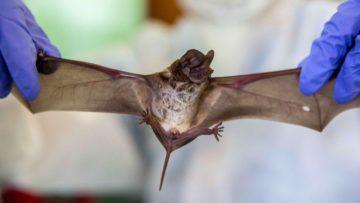Harriet Constable in BBC:
 Asia has a high number of emerging infectious diseases. Tropical regions have a rich array of biodiversity, which means they are also home to a large pool of pathogens, increasing the chances that a novel virus could emerge. Growing human populations and increasing contact between people and wild animals in these regions also ups the risk factor. Over the course of a career sampling thousands of bats, Wacharapluesadee and her colleagues have discovered many novel viruses. They’ve mostly found coronaviruses, but also other deadly diseases that can spill over to humans.
Asia has a high number of emerging infectious diseases. Tropical regions have a rich array of biodiversity, which means they are also home to a large pool of pathogens, increasing the chances that a novel virus could emerge. Growing human populations and increasing contact between people and wild animals in these regions also ups the risk factor. Over the course of a career sampling thousands of bats, Wacharapluesadee and her colleagues have discovered many novel viruses. They’ve mostly found coronaviruses, but also other deadly diseases that can spill over to humans.
These include the Nipah virus. Fruit bats are its natural host. “It’s a major concern because there’s no treatment… and a high mortality rate [is] caused by this virus,” says Wacharapluesadee. The death rate for Nipah ranges from 40% up to 75%, depending on where the outbreak occurs. She isn’t alone in her worry. Each year, the World Health Organization (WHO) reviews the large list of pathogens that could cause a public health emergency to decide how to prioritise their research and development funds. They focus on those that pose the greatest risk to human health, those that have epidemic potential, and those for which there are no vaccines. Nipah virus is in their top 10. And, with a number of outbreaks having happened in Asia already, it is likely we haven’t seen the last of it.
More here.
